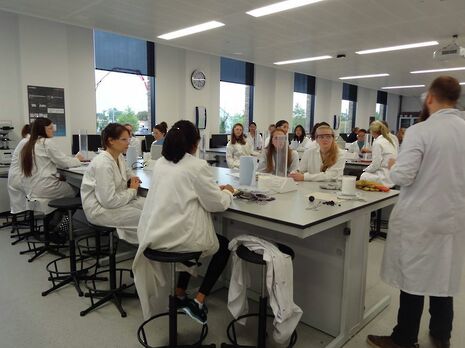Science’s Nobel women: The stars that history forgot
Emma Li profiles some of the many female scientists history has forgotten

In 1908, at the Harvard College Observatory, a female astronomer called Henrietta Swan Leavitt discovered the period-luminosity relationship for Cepheid variable stars. This was a groundbreaking achievement that paved the way for some of the most significant astronomical revelations of the last century – including the discoveries of Edwin Hubble, who himself often stated that he felt Leavitt deserved a Nobel Prize for her work.
Yet she never received one, and even to this day remains largely forgotten, while Hubble is known to every physics student, and he has even given his name to one of the world’s largest space telescopes – all because Leavitt was a woman.
Leavitt’s position at the Observatory was not that of a researcher, but instead that of a ‘computer’ – a person hired to perform mathematical calculations who, in Turing’s words, was supposed to “be following fixed rules” with “no authority to deviate from them in any detail”. Despite being highly educated, her gender meant that, at the time, no higher position was open to her.
Leavitt discovered that Cepheid variables with a greater intrinsic luminosity have a longer period – the first ‘standard candle’ in physics (an object used to estimate astronomical distances), and a tool used by both Hubble in his calculation of the distance to Andromeda galaxy, and Shapley in his determination of the position of the Sun there. These revelations helped us estimate for the first time the size of the Universe, and our position within in.
Leavitt published her results in the Annals of the Astronomical Observatory of Harvard College, but her discovery went largely unnoticed. Her director at the Observatory, Edward Pickering, published the findings as his own in 1912, crediting to Leavitt merely as the person who had prepared the statement.
In 1924, when a member of the Swedish Academy of Sciences tried to nominate her for the Nobel Prize, the Observatory’s new director Harlow Shapley replied that the commendation really belonged to him, for his interpretation of her findings.
Actually, Leavitt could not be nominated as she had passed away by this time, but the fact that the scientific community was unaware that she had passed away several years prior goes to highlight further how unrecognised she was.
A similar story from the same observatory is that of Cecilia Payne-Gaposchkin, who in 1925 established the elemental composition of stars as mainly hydrogen and helium and found their relative abundances. Her PhD thesis was referred to by astronomers Velta Zebergs and Otto Struve as “undoubtedly the most brilliant Ph.D. thesis ever written in astronomy”, yet she also remains unrecognised for her work.
When Payne-Gaposchkin initially reached her conclusion (which still holds today), she was persuaded by the astronomer Henry Norris Russell to publish her finding as merely “spurious”, as it contradicted the accepted wisdom of the time. Four years later, Russell reached the same conclusion through a different method and published it himself, and now generally receives credit for her discovery.
However, the struggles of the Harvard Observatory women were not entirely in vain. Joan Feynman (sister of Richard Feynman, but herself an important physicist), recalls being dissuaded from a science career by her grandmother – “Women can’t do science," she said, “because their brains can't understand enough of it” – until she came across Payne-Gaposchkin’s work in an astronomy textbook.
Seeing that a woman could write an astronomy textbook gave Feynman the confidence to pursue the career in science she wanted. Payne-Gaposchkin is often regarded as a trailblazer for women in the scientific world that was so biased against them at the time, and the lasting influence she has can be seen today in the increasing numbers of girls in STEM subjects.
 News / SU stops offering student discounts8 January 2026
News / SU stops offering student discounts8 January 2026 Comment / Plastic pubs: the problem with Cambridge alehouses 5 January 2026
Comment / Plastic pubs: the problem with Cambridge alehouses 5 January 2026 Science / New year, new room, new you8 January 2026
Science / New year, new room, new you8 January 2026 Comment / What happened to men at Cambridge?31 December 2025
Comment / What happened to men at Cambridge?31 December 2025 Theatre / Camdram publicity needs aquickcamfab11 January 2026
Theatre / Camdram publicity needs aquickcamfab11 January 2026








